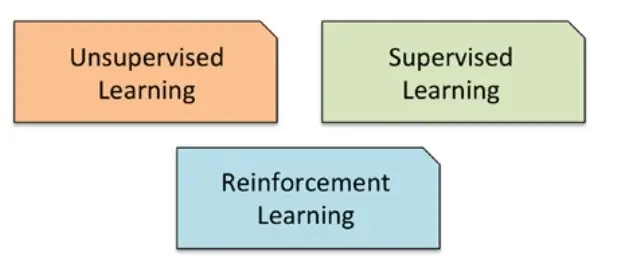ABSTRACT
This article is about Python and Machine Learning and targets those users who wish to take advantage of Python.
In this article we are going to learn :-
- Why Python?
- What can we do with python?
- What is Machine Learning and how python helps developers in machine learning?
- How easy/tough to play with Python and Machine Learning?
Why Python?
- Python has been used in many data science applications. It combines the power of general-purpose programming languages with the ease of use of domain-specific scripting languages like MATLAB or R.
- Python has libraries for data loading, visualization, statistics, natural language processing, image processing, and more. This vast toolbox provides data scientists with a large array of general and special-purpose functionality.
- Machine learning and data analysis are fundamentally iterative processes, in which data drives the analysis.
What can Python do?
Python is capable of multi-threading and GPU processing just like other languages. Most of the data processing modules are Python Wrappers around C/C++ code.
The phrase “wrapper” means that someone has already wrapped Python code over another language like wrapping any item inside with paper/cloth in real-world example. So, when you have a Python wrapper around C++ code, that means someone has written some python code that interacts with the existing C++ language.
“Modules” are pre-written in Python code that you simply “import” in your Python program and execute easily.
Thus, Python can be used to make games, do data analysis, control robot and interact with hardware, create GUIs, even to create websites as well as research and development of production systems.
Python is a vast language with number of modules, packages and libraries like NumPy, SciPy, Scikit-Learn, Matplotlib are used in data science and data analysis that provides multiple ways of achieving a task and helps developer creating scalable machine learning algorithms such as linear regression, logistic regression, Naïve Bayes, k-means, K nearest neighbor and Random Forest.
INTRODUCTION
Wow let’s start with PythonWe’re finally here!
But first, let me tell you what Python is. Python is a very popular programming language that can be used for creating dynamic websites, games, scientific software, real time applications, big data, machine learning (ML), artificial intelligence (AI), graphics and many more.
Python originated in the late 1980s and its main goal is to be readable by human beings (not only machines!). This is why it looks simpler than other programming languages, but don’t worry – Python is also really very much powerful language!
Python provides library support for numbers of programming languages like java, JavaScript, C# and many much more.
DOWNLOAD AND INSTALLATION
You can install software for machine learning in any of the two methods as discussed here:
Download and install Python separately from python.org on various operating systems as explained below:
To install Python after downloading, double click the .exe (for Windows) or .pkg (for Mac) file and follow the instructions on the screen.
For Linux OS, check if Python is already installed by using the following command at the Prompt:
$ python –version. …
If Python 2.7 or later is not installed, install Python with the distribution’s package manager. Note that the command and package name varies. On Debian derivatives such as Ubuntu, you can use apt:
$ sudo apt-get install python3
Why Machine Learning?
- The logic required to make a decision is specific to a single domain and task.
- Changing the task, even slightly, might require a rewrite of the whole system.
- Designing rules requires a deep understanding of how a decision should be made by a human expert.
What is Machine Learning?
Machine learning is a discipline that deals with programming the systems so as to make them automatically learn and improve with experience. Here, learning implies recognizing and understanding the input data and taking informed decisions based on the supplied data. It is very difficult to consider all the decisions based on all possible inputs. To solve this problem, algorithms are developed that build knowledge from a specific data and past experience by applying the principles of statistical science, probability, logic, mathematical optimization, reinforcement learning, and control theory.
Need of Machine Learning in Software Development
Machine Learning (ML) is an automated learning with little or no human intervention. It involves programming computers so that they learn from the available inputs. The main purpose of machine learning is to explore and construct algorithms that can learn from the previous data and make predictions on new input data.
Concepts of Learning
Learning is the process of converting experience into expertise or knowledge. Learning can be broadly classified into three categories, as mentioned below, based on the nature of the learning data and interaction between the learner and the environment. There are three types of machine learning: supervised learning, unsupervised learning, and reinforcement learning.

Supervised learning
The machine learning program is both given the input data and the corresponding labeling. This means that the learned data has to be labeled by a human being beforehand.
Unsupervised learning
No labels are provided to the learning algorithm. The algorithm has to figure out a clustering of the input data.
Reinforcement learning
A computer program dynamically interacts with its environment. This means that the program receives positive and/or negative feedback to improve its performance.
Applications of Machine Learning Algorithms
The developed machine learning algorithms are used in various areas such as:
- Vision processing
- Language processing
- Forecasting things like stock market trends, weather
- Pattern recognition
- Games
- Data mining
- Expert systems
- Robotics
Steps Involved in Machine Learning
A machine learning project involves the following steps:
- Defining a Problem
- Preparing Data
- Evaluating Algorithms
- Improving Results
- Presenting Results
Python in Machine Learning
Python has in-built libraries that enables developers to use optimized algorithms. It implements various machine learning techniques such as recommendation, classification, and clustering. Therefore, it is necessary to have a brief introduction to machine learning before we move further.
Python Libraries and Packages for ML
To understand machine learning, you need to have basic knowledge of Python programming. In addition, there are several libraries and packages generally used in performing various machine learning tasks as listed below:
- numpy- is used for its N-dimensional array objects
- pandas – is a data analysis library that includes data frames
- matplotlib – is 2D plotting library for creating graphs and plots
- scikit-learn – the algorithms used for data analysis and data mining tasks
- seaborn – a data visualization library based on matplotlib
Now, open the command prompt and run the following command to verify that Python is installed correctly:
Similarly, we can download and install necessary libraries like numpy, matplotlib etc. individually using installers like pip. For this purpose, you can use the commands shown here:
$pip install numpy
$pip install matplotlib
$pip install pandas
$pip install seaborn
After opening either of them, type the following commands:
import numpy
import matplotlib
Next, you can import the required libraries and print their versions as shown:
>>>import numpy
>>>print numpy.__version__
1.14.2
>>> import matplotlib
>>> print (matplotlib.__version__)
2.1.2
>> import pandas
>>> print (pandas.__version__)
0.22.0
>>> import seaborn
>>> print (seaborn.__version__)
0.8.1
Also Read: How To Increase Your Business With Machine Learning?
About Author:
Ashish Kumar Gupta is a Sr. Python and JavaScript full stack developer, currently working with QSS Technosoft. He is a technology writer in Python, JavaScript, Django, TornadoWeb, Flask, Reactjs, Nodejs, RabbitMq, Mqttbrocker, Graphql, Redis, Memcached, Celery, Scapy, AWS, Google Cloud, Kibana, Databases (Mysql, SqlServer, Mongodb, Sqlite) and web search engine development using Apache Solr and Elastic Search. He has completed his master’s degree in Information Technology from GBTU Lucknow.
About QSS:
QSS has a proven track executing enterprise level web and mobile applications forits esteemed customers. To Know More...

A brief about Machine Learning using Python